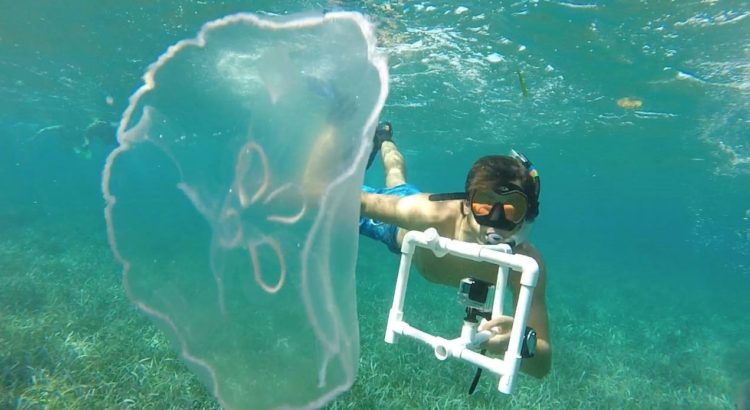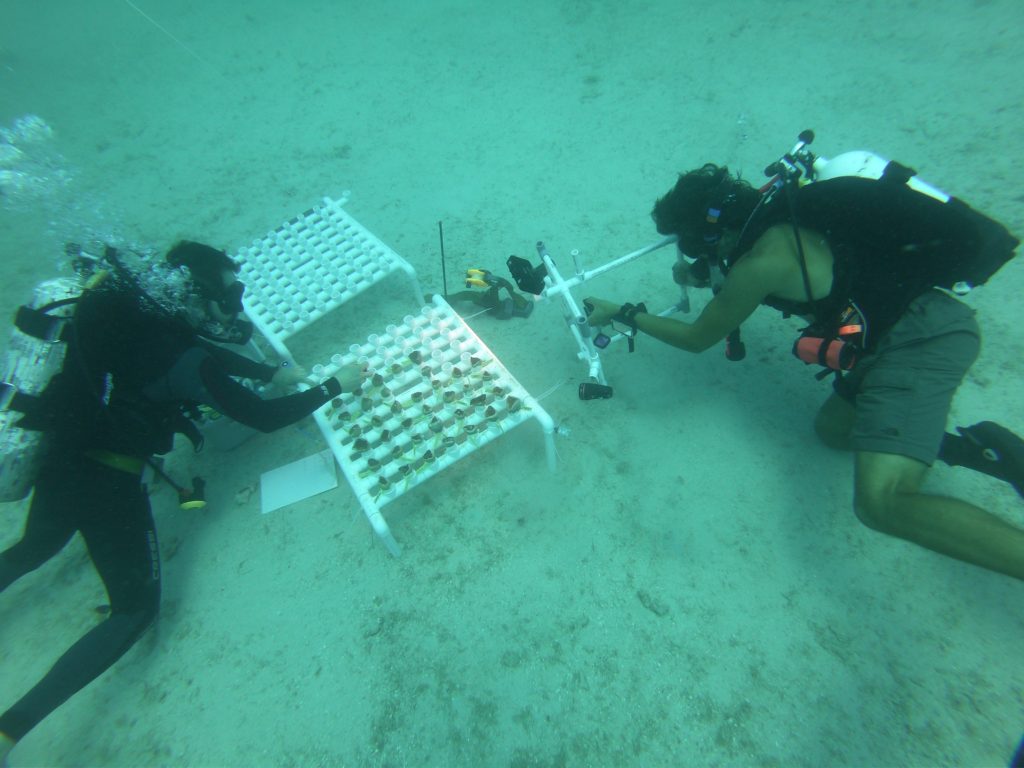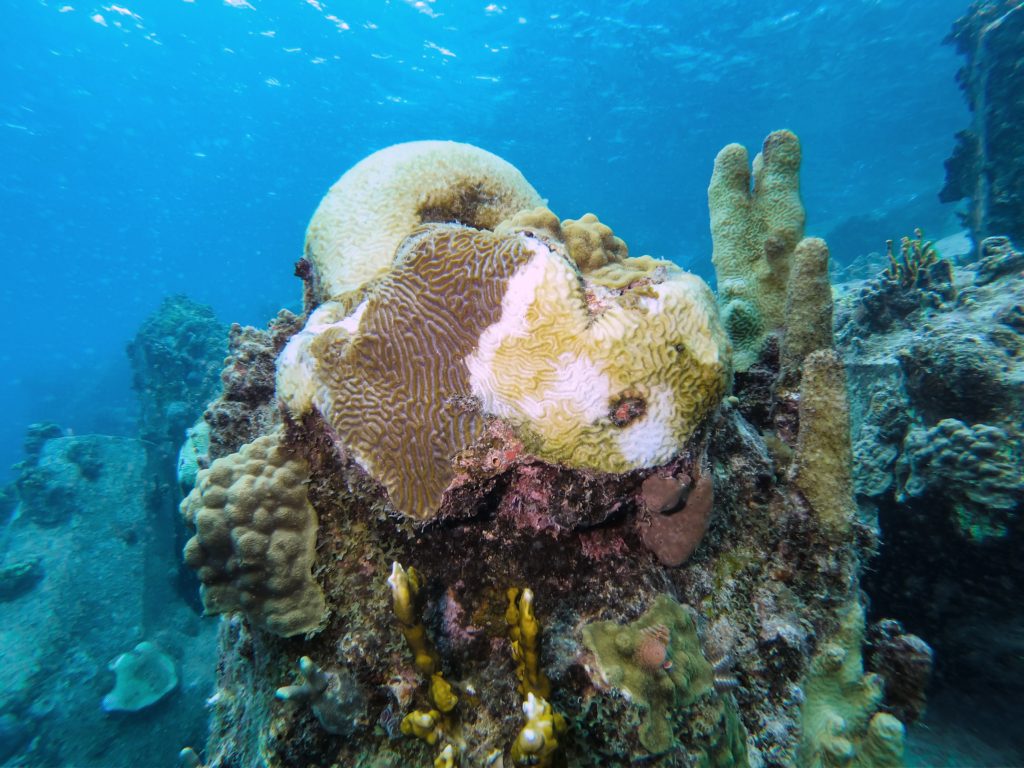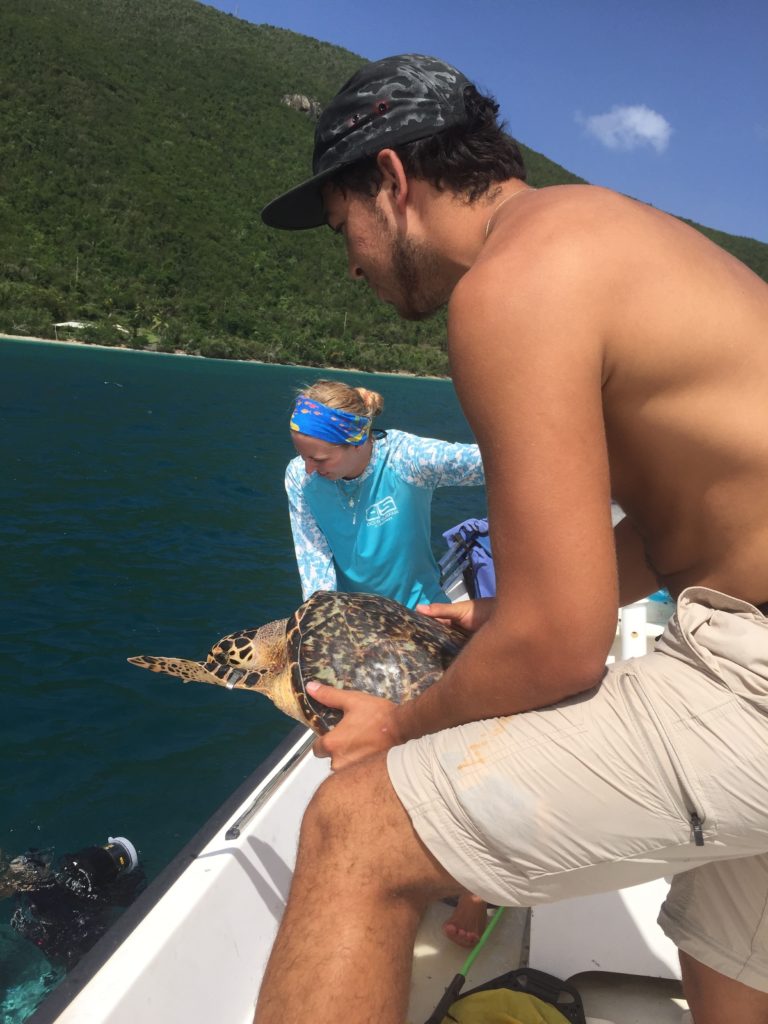Transplanting corals between the shallow and deep: how do the corals change with different light environments?
In the spring of 2018, researchers from Pennsylvania State University in collaboration with the University of the Virgin Islands fragmented and transplanted Orbicella franksi and Orbicella faveolata corals at two different depths: 20 feet and 80 feet. Once the corals were switched, they were left for nearly six months and allowed to adjust to their new depth. The researchers hoped to gain an understanding in what may help corals live in lighter or darker environments, looking at how their physiology and bacterial communities may change, or, possibly, if their genetics shape where they survive and grow and prevent them from shifting to a new light environment.
Coral Disease in the USVI
In January of 2019, a devastating coral disease was identified southwest of the St. Thomas. The disease appears to be Stony Coral Tissue Loss Disease, a coral disease that has ravaged the Florida Reef Tract for the past 5 years. From it’s initial observation, scientists and government agencies are now working around the clock to study, map, and ultimately combat the disease.
Sea Turtle Tagging Program
At the University of the Virgin Islands, there is an ongoing effort to understand the growth, movement, and population size of juvenile turtles in Brewers Bay. This is done through mark-and-recapture protocols, where turtles are captured by specially trained freedivers, tagged, and safely released back into the bay. This form of study is a rare opportunity to see these endangered creatures up close, and provides the researchers with valuable information about the species as the study continues.



